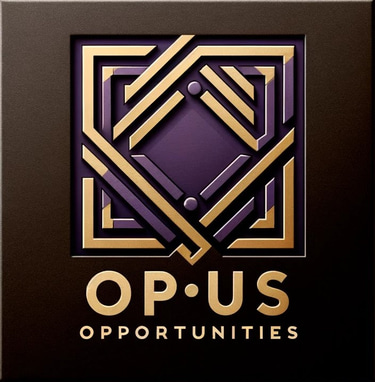Storytelling in Your Job Search—Captivate Employers with Your Unique Narrative
In today’s job market, storytelling is a powerful tool to distinguish yourself from other candidates. Crafting a professional narrative allows you to showcase your growth, problem-solving abilities, and unique value proposition. Instead of merely listing qualifications, share key experiences, challenges, and achievements that align with your target role. This season, refine your professional story across your resume, LinkedIn, and interviews to captivate employers. Practice delivering your narrative confidently, emphasizing how your journey prepares you for your next career chapter.
Kamy Charles
10/18/20243 min read


When it comes to your job search, storytelling is a powerful tool that can set you apart from other candidates. By weaving your experiences into a compelling narrative, you can create a lasting impression on employers and showcase the unique value you bring to the table.
The Power of Storytelling in Your Career Journey
Storytelling is an age-old art that resonates on a deep, emotional level. It’s how we connect, communicate, and understand one another. In the context of a job search, storytelling allows you to present your experiences, skills, and achievements in a way that is engaging, memorable, and authentic. Instead of listing qualifications, storytelling helps you craft a narrative that highlights your growth, challenges, and the impact you’ve made throughout your career.
At the heart of effective storytelling is your professional narrative—the story of who you are, what you’ve accomplished, and where you’re headed. This narrative should not only reflect your career history but also convey your passion, values, and vision for the future. It’s about connecting the dots between your past experiences and your future aspirations, creating a cohesive and compelling story that resonates with potential employers.
- Actionable Step: Start by reflecting on the key moments in your career that have shaped you as a professional. Identify the challenges you’ve overcome, the successes you’ve achieved, and the lessons you’ve learned along the way. Use these moments to craft a narrative that illustrates your journey and aligns with the role you’re seeking.
Think of your career as a book, with each job or role representing a chapter in your story. These chapters should highlight the key experiences that define your professional journey, showcasing your growth and the impact you’ve had in each position. By framing your experiences as part of a larger narrative, you help employers see how each role has contributed to your development and prepared you for the next opportunity.
- Actionable Step: When describing your past roles on your resume or in interviews, focus on the key experiences that have been most impactful. Use specific examples to illustrate your achievements, and connect these experiences to the skills and qualifications required for the job you’re applying for.
Every great story includes challenges, and your career story is no different. Emphasizing the challenges you’ve faced—and how you’ve overcome them—demonstrates your problem-solving abilities, resilience, and determination. Employers are not just interested in what you’ve done, but how you’ve handled adversity and turned challenges into opportunities for growth.
- Actionable Step: Identify the significant challenges you’ve encountered in your career and the solutions you implemented to address them. When discussing these challenges in interviews, use the STAR method (Situation, Task, Action, Result) to provide a clear and structured account of how you navigated the situation and the positive outcomes you achieved.
Your unique value proposition is the core message of your professional story—it’s what sets you apart from other candidates and makes you the ideal choice for the role. By clearly articulating your value proposition, you help employers understand the specific skills, experiences, and qualities that you bring to the table.
- Actionable Step: As you craft your narrative, focus on the unique contributions you’ve made in your previous roles. Whether it’s driving revenue growth, leading successful projects, or building strong teams, highlight the impact you’ve had and how it aligns with the needs of the employer. Ensure that your value proposition is consistently communicated across your resume, cover letter, and LinkedIn profile.
Storytelling is an art that improves with practice. To effectively communicate your professional narrative, it’s important to refine your storytelling skills and practice delivering your story with confidence and authenticity. This is especially important for interviews, where your ability to tell your story can make a significant difference in how you’re perceived.
- Actionable Step: Practice telling your story in different formats—whether it’s in a one-minute elevator pitch, a detailed interview response, or a written summary on your LinkedIn profile. Focus on clarity, engagement, and relevance to the role you’re pursuing. Seek feedback from mentors or peers to help you refine your delivery and ensure that your story resonates with your audience.
Just as fall brings a sense of rhythm and change, storytelling can bring rhythm and meaning to your job search. By crafting a compelling narrative that highlights your experiences, challenges, and unique value proposition, you can captivate employers and stand out in a competitive job market. Remember, your story is not just a record of your past—it’s a reflection of your growth, your potential, and the impact you’re poised to make in your next role.
As you prepare for your job search this season, take the time to refine your professional narrative. Embrace the power of storytelling, and watch as your experiences come together to create a captivating story that draws employers in and sets the stage for your next career chapter.
